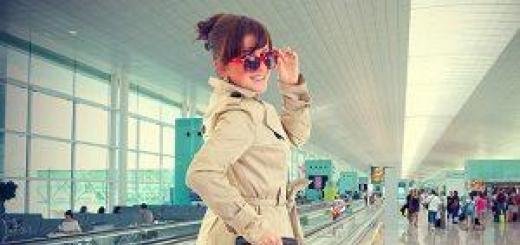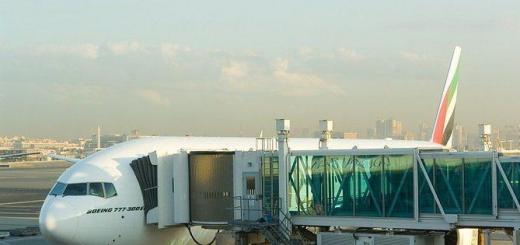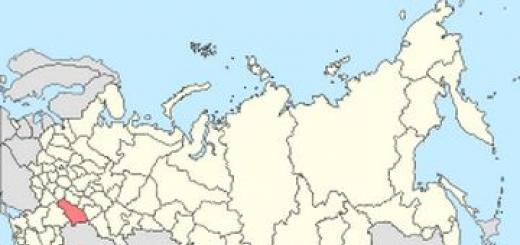Air travel is not only convenient and safe, but also comfortable. However, this is not the case if you are flying for the first time. Your first plane ride can be stressful if you don't know where to go or what to do. Consider how to behave after arriving at the airport.
What to do at the airport and how to get on board
Immediately after arriving at any airport, you need to find the check-in counter. If this is your first time flying by plane, just ask the airport staff how to find it. Your check-in counter will be with the logo of the airline whose ticket you purchased. The following is a step by step guide:
- At the check-in desk, you need to show your itinerary receipt and passport. After that, you will be given a boarding pass, which serves as a boarding pass. Here you can also express your wishes about the place that you would like to take. To travel in the sky, many passengers ask for a window seat.
- Then you will be directed to the pre-flight screening. An airline employee will examine your passport and boarding pass, and then send it on.
- Then comes the security check. Do not be afraid of active employees and a metal detector. You will be asked to put all metal and small items, including your mobile phone and jewelry, into the basket. Items will be scanned using special equipment for prohibited items. You yourself will also go through the metal detector, and then you can pick up your things.
If the airport staff has any questions for you, you will be asked to go to the personal screening table. There is nothing wrong with this procedure, but try to communicate with people as correctly as possible. Most likely, your things will simply be checked again and you will be let through.
What to do with luggage and hand luggage
Inspection and passport control are carried out after you have dealt with hand luggage and luggage. At the check-in desk, tags for luggage and hand luggage cling. You take your hand luggage with you to the cabin of the aircraft, and your luggage is checked in at the baggage carousel in the same place, next to the check-in counter. Upon arrival, you can pick up your luggage, recognizing it by a tag with your details.
International flights
If on domestic flights the screening procedure is relatively simple, then on international flights it is complicated by the presence of the so-called customs corridor. What is customs control, you will find out even before departure. It is necessary to check in for a flight after passing through customs control, that is, this will be the first procedure for you. When you arrive at the front desk, you will be directed to one of the corridors:
- the green corridor is intended for people who do not have things included in the customs declaration. These include alcohol and cigarettes, perfumes and some other things that you will be informed about at the front desk;
- the red corridor is for people who have these things. Only passengers who have paid the duty to bring these items into the country are allowed on board the aircraft.
After completing all the pre-flight formalities, you can go to the waiting room. There you can wait for your flight in peace. Numerous cafes and restaurants, shops and other establishments are at your service. There is also an information board here so that you can navigate by time and circumstances. The electronic scoreboard contains information through which gate your plane takes off. Make sure you know where this gate is in advance. If in doubt, cast aside fear and feel free to contact the airport employee, they will tell you everything in detail and show you - this is their job.
Where to go to board the plane
When the loudspeaker announces that boarding for your flight has started, go through the required gate. There you will see an airline employee who needs to present a boarding pass. He will tear off the control spine and return the document to you. Keep it until the very exit from the plane - in any unforeseen situations, you will need it.

Procedure for takeoff and landing
When you board the aircraft, you will be met by flight attendants - you can ask them any questions you are interested in, as well as ask for help. If you can't find your seat right away, ask the flight attendant. Everyone is sympathetic to people who fly on an airplane for the first time. Once everyone has taken their seats, the flight attendants can offer you a pillow and a blanket, which you can take or refuse.
Immediately before takeoff, a briefing is held, during which you will be told what to do in the event of an accident. Remember where the emergency exits are located, how to use the oxygen masks and in what sequence to act.
How to behave during takeoff and landing, we present in the form of a table for your convenience.
Some passengers suffer from ear congestion and pain during takeoff and landing. To minimize these sensations, chewing gum is recommended. You can also wear earplugs during the flight.
Rules of conduct in flight
On the plane, after takeoff and before landing, additional services will become available to you, in particular:
- At some point, food will be distributed throughout the cabin. Before this, passengers are served drinks - you can choose the one that you like the most. Depending on the airline that serves you, the quality of food can be of different quality, but as a rule, it is quite varied and tasty.
- If you wish, you can ask the flight attendant for a newspaper or magazine if you have nothing to do during the flight.
- No one will forbid you to watch a movie on your laptop, listen to music or get comfortable with a blanket and pillow.
- Some airlines offer Wi-Fi internet access for an additional fee.
You, in turn, do not forget about compliance with the rules of the salon. It is forbidden to make noise or disturb other passengers in the cabin. Also, you can’t eat food with a clear smell: fish, pies, etc. All flight attendants’ instructions must be strictly followed.
Thus, the first flight is not scary if you know what awaits you. In case of any misunderstanding, you can always contact the airport staff, they will promptly help in resolving any of your questions.
My first airplane flight was very memorable. Since it was the first time, I remember it for the rest of my life.
The flight did not last long, a couple of hours. Before the flight, I was very worried, I was seized with fear, and the panic began to intensify. I had tremors in my hands and a weak voice. I never thought it was possible to be so afraid. Thanks to the people who flew with me, I calmed down, they told me different funny stories. And it wasn't so scary. Then curiosity got the better of me. How is it, up there in the sky? Clouds are very close.
After registration, boarding began. This is a large corridor through which everyone goes to the plane. A very bright room, I walk and have such a feeling of delight and fear at the same time. It seemed to me that I was alone on this whole plane. Everyone else has such calm faces, it seems as if they were not on a plane, but just went for a ride on a bus. When I got on the plane, it seemed even bigger to me. There was so much space, very comfortable seats and wide aisles between them. My anxiety didn't go away. I couldn't wait for it to take off and be in the sky. The stewardess warned everyone about seat belts and spoke about the rules of conduct on the plane.
A few minutes later, the engine started to start and there was a slight noise in the cabin. All in all, not as bad as I thought. When the plane began to climb, my ears were stuffed up, and this went on for quite some time. I tried to calm down and started eating sucking refreshing sweets, they help a lot in such situations. And now we are already in the sky, the weather is beautiful, it's just not to express. It's like walking on clouds. I was sitting right next to the window. Smaller and smaller roofs of houses could be seen through the white clouds. Vibration in the cabin of the aircraft, more and more intensified when lifting. Having gained its height, the plane began to fly quietly.
One could relax and enjoy the height and beauty of the blue sky. A few minutes later, while reading a very interesting book, I fell asleep, although I did not even think about it. On the contrary, I wanted to see and feel everything. But the dream turned out to be stronger than me and took possession of me during the flight. I woke up from the flight attendant saying something about landing. In a panic, I began to check the belts, drank water and again took out my sweets. On landing, the vibration began again and the noise intensified. I closed my eyes in fear. This did not last long. Our plane landed safely and everyone was happy with the flight.
I really liked this flight, as I slept and almost didn’t feel anything. But that's just this fear of flying, I think I'll deal with it somehow.
Ivanova Elena Alexandrovna
The plane is the fastest mode of transport, which allows you to get from one point of the world to another in a matter of hours. And the flight is also associated with the observance of a huge number of rules and organizational issues that seem incomprehensible to a person who has never flown before. In addition, there are many ways to make the trip comfortable and overcome the fear of heights. What do I need to know if I'm flying for the first time?
Buying tickets
Flying on an airplane for the first time is preceded by the first purchase of tickets. In addition to the fear of heights, many people are deterred from air transport by the high cost of transportation. These tips will help you save:
- With a long search for tickets on the Internet (especially for foreign airlines), prices become higher. And all because sites collect information and, detecting your interest, they try to sell tickets at a higher price. Therefore, it is recommended to search for tickets in incognito mode.
- If you have a short flight, use the services of low-cost airlines. Of course, you will have to neglect comfort, but for 2-3 hours you won’t notice it much.
- It is much more profitable to buy tickets both ways at once. And if you buy separately at different times, it can cost you twice as much.
- Non-refundable tickets are usually cheaper. If you are 100% sure that your plans will not change, buy them. But be prepared for the fact that if you change your mind about flying, you will lose the entire amount.

First visit to the airport: where to go and what to do?
"For the first time I'm flying on an airplane - what and in what sequence should I do?". The first thing you should take care of is to arrive at the airport on time. Plan your time so that you arrive at the place two to three hours before departure, so that you can do everything slowly and calmly. Major airports are usually divided into terminals. Check your ticket in advance to find out exactly where you need to go.
When you have safely reached the terminal, it will take some time to get into it. At the entrance, security control is carried out - you need to put your luggage on the scanner belt and go through the metal detector frame.
Next, go to the departure board. It contains information about flights - number, destination time, as well as the check-in counter and its status (open / closed / ended). Important: be sure to check the flight number indicated on the board with the number indicated on your ticket. With a difference of several minutes, flights with the same message can depart, so there is a high risk of confusion.

registration
Before you fly on an airplane, you must provide the airline with real data about yourself. This is the essence of the registration procedure. It starts 2 hours before departure and ends 40 minutes before departure. By the way, this procedure can be completed at home via the Internet or at a self-registration kiosk, which will significantly save your time. But on the first flight, it is better to do it directly at the airport. The standard registration procedure is carried out in two stages:
- Checking documents and tickets, issuing a boarding pass.
- Weighing and checking in luggage, as well as obtaining the appropriate tag. Be sure to save it in case your luggage is lost or damaged.

The waiting area
Flying in an airplane for the first time is exciting. Especially if you have not been to the airport before and are poorly oriented in it. Therefore, immediately after registration, without wasting time, go in search of your gate. At major international airports, special trains can run to the gates. There may also be digital signs that indicate how many minutes you still have to walk to your destination.
Before entering the waiting area, you will have to go through a security check. It has to do with security measures. You will go through the metal detector and pass your hand luggage through the scanner. By the way, at this stage you will need to remove outerwear. Sometimes passengers are forced to take off their shoes.
In the waiting area, you can just sit, visit duty free or have a bite to eat. It is worth noting that catering establishments here are quite expensive. As for duty free, the prices here cannot be called budget. Nevertheless, you can be 100% sure of the originality and high quality of the purchased goods.

Landing
The impressions of the first flight in an airplane for the first time largely depend on how calmly and collected you went through all the procedures. Another important and exciting moment is landing. While in the waiting area, try not to leave your gate so as not to miss important information (for example, about a flight rescheduling, changing gates, and so on).
Many passengers line up at the gate as soon as they enter the waiting area. Another category of passengers is very skeptical about this. "I'm flying for the first time on an airplane - what should I do?". If you have quite a lot of hand luggage, you still better follow the example of the first group. This is necessary in order to have time to take the luggage rack next to your seat. Otherwise, you will have to look for a long time where to place your things. By the way, in some modern airports, passengers of a certain flight are divided into groups (indicated in the boarding pass) in order to avoid the formation of queues near the gates.
After presenting your boarding pass, you will receive a stub with your seat. Further, depending on the airport, your path to the aircraft will be on foot, through an air ladder or by bus (as a rule, it is very crowded and stuffy in it). A little more, and you will be able to say to yourself: "We are flying in an airplane for the first time!".
What are the best places?
"We are flying in an airplane for the first time - which seats will be more comfortable?". The first rule of choosing a place is closer to the head. In this zone, turbulence is least felt (by the way, this is why the business class is located in front of the aircraft).
As for the seats by the window - this is a moot point. Of course, on the first flight, you will be interested in the picture in the window, especially during takeoff and landing approach (unless you are flying at night when it is pitch dark outside the window). But whenever you want to go to the toilet, you have to step over the neighbors. But if you plan to sleep with your head against the wall during the flight, a window seat is the perfect solution for you.
If you are claustrophobic, you'd better choose an aisle seat. In addition, you can freely go to the toilet without fear of disturbing your sleeping neighbors. But be prepared for the fact that the neighbors will step over you, and therefore you will most likely not be able to sleep peacefully.
"For the first time we are flying on an airplane and we are very afraid" - if this is about you, then try to get seats at the emergency exit. There nervous passengers feel much calmer. In addition, here the distance to the next chair is large enough, and you can safely stretch your legs.
It's great if you fly in a half-empty plane. After takeoff, you can walk around the cabin - you may be lucky enough to find three empty seats. You can comfortably stretch out and sleep on them, like in a train car.

What you need to know about baggage transportation?
Before you fly on an airplane, you need to learn some subtleties about carrying luggage. It will fly separately from you, so consider in advance what items you want to take on board as hand luggage. And things forbidden to be carried into the cabin (liquids, sharp objects, aerosols, and so on) put in a suitcase. For a detailed list of items that cannot be taken with you into the cabin, please visit the airline's website.
Of course, the ideal option (if you are flying somewhere for a short time) is to fit everything in hand luggage. The main thing is that in terms of dimensions and weight it does not exceed the parameters established by the rules of the airline. As a rule, its maximum weight is up to 10 kg. Since the dimensions are about the same, accessories manufacturers produce special suitcases that you can take with you on a plane. This approach will significantly reduce your time at the airport upon arrival, as well as eliminate the worry that something will happen to your luggage or it will be lost.
If you have a lot of things with you, then at check-in you part with your luggage. At the same time, you need to know that it can be overall (a regular bag or suitcase) and oversized. The latter is suitable for weight, but does not correspond to the established dimensions (for example, a guitar or other musical instrument), and therefore is issued separately, but is not paid extra. But you will have to pay for the excess. In addition, such luggage requires additional clearance, which will take you another 20 to 40 minutes. So if you're not flying alone and want to save time and money, it might be worth "scattering" things between suitcases to invest in the airline's weight allowance.
And, of course, you should know that when loading suitcases into the luggage compartment, employees, as a rule, do not stand on ceremony. Therefore, if you do not want your suitcase to be damaged, so that something falls out of it, it is better to pack it. Experienced travelers take a roll of cling film with them. If you are not so prudent, there are packers at your service at the airport who will do everything efficiently and professionally. Among the official packing points, the most expensive ones are located near the main entrance (their services cost about 700 rubles). Packers can also come to you and offer a service at a price 2-3 times lower.
Here are a few more things to know when flying for the first time on an airplane:
- be sure to take a picture and make an inventory of the contents of the suitcase - this will help you get decent compensation in case of loss of luggage;
- remove the belts and wheels from the suitcase - they often cling to the transport belt, due to which the luggage can be lost;
- give preference to bright and recognizable, but inexpensive suitcases;
- Be the last to check in, so you'll be among the first to receive your luggage upon arrival.

Airplane food
"We are flying for the first time on an airplane - will they feed us?" In fact, it all depends on the carrier. In major international airlines, you can have a pretty good meal. You can even choose a special menu (for example, vegetarian). But in low-cost airlines, you can not count on frills. There is a chance that you will not be fed at all.
There is an unspoken rule: the longer you fly, the more satisfying and tastier you will be fed. Also, the menu may vary depending on the time of day. So, early in the morning and late at night, most airlines offer a sandwich or a bun. On daytime and evening flights, the menu is more nutritious. But you should not count on anything supernatural. Therefore, if you have the opportunity to take something with you (for example, a cookie or a chocolate bar), be sure to do it.

Takeoff and landing
Flying on an airplane for the first time is usually accompanied by fear and excitement. Most people are afraid of being in the air. However, the most stressful moments are takeoff and landing. In 90% of cases, it is at these stages that technical malfunctions occur. Therefore, the flight attendants ask you to fasten your seat belts, raise the backs of your seats, fold the tables and open the porthole curtains.
Also, during takeoff and landing, the cabin lights turn off. This is to get your eyes used to natural light (or lack of it). Again, this is necessary in case of an emergency, so that passengers can quickly navigate the cabin during the evacuation.

How to overcome the fear of flying?
In fact, a lot of people are afraid of flying. Even those who outwardly look completely calm and confident experience a certain amount of anxiety. Is it a joke to rise several kilometers above the ground on a huge winged structure? “I’m flying on a plane for the first time and I’m afraid” - if this is about you, use these recommendations to help overcome the excitement:
- Dress as comfortably as possible so that nothing presses, rubs or restricts movement. Moreover, if you have a long flight (for example, 10-12 hours), you can take a change of clothes with you. You will feel as comfortable and at ease as on a train.
- Give preference to comfortable shoes. If boots, shoes, boots, and so on will crush, this will lead to circulatory disorders, which will lead to a deterioration in well-being. And this does not contribute to emotional balance. Alternatively, wear comfortable athletic shoes. Ideally, you should bring soft, cozy slippers with you.
- Take chewing gum or hard candy with you. Surprisingly, it helps to distract from experiences. In addition, lozenges and chewing gum help to cope with nausea and congestion in the ears.
- Learn to breathe properly. You need to slowly and deeply inhale through your stomach and exhale slowly through your mouth. This technique helps relieve emotional and muscle tension.
- Get something to do with your hands. It can be an anti-stress toy or some kind of puzzle. It can be any other object that you will twirl in your hands, touch with your fingers, or simply press against you. It is believed that stress is concentrated in the limbs (in particular, in the fingertips). If they are busy with something, the brain will be distracted from experiences.
- You can drink a "sip for courage", but no more. In a state of intoxication, panic can only intensify. In addition, it can cause an inadequate reaction of the vestibular apparatus.
- Get away from what's going on. Your favorite music, an interesting movie, an exciting book, a crossword puzzle or a game on a tablet will help you with this. Absolutely abstract - that's how to fly an airplane for the first time. Immerse yourself completely in entertainment, and the flight will go unnoticed.
- Handle turbulence appropriately. This is not a plane crash or an emergency. These are just vibrations of the machine caused by vortex air currents. When designing an aircraft, all these points are taken into account, so there is nothing to be afraid of. Imagine that you are driving a car on a bad road.
How to make the flight as comfortable as possible?
What do you need to know when flying for the first time? In fact, there are a lot of rules and subtleties that will become ordinary and simple for you over time. But when using air transport for the first time, it is important that the flight is as comfortable as possible. Tips from experienced travelers will help you:
- Book your seats in advance. This service is paid, but you will have the guarantee that you will sit where you want. Otherwise, you will have to be content with the seat that you get at the time of registration.
- Check in advance if meals are provided and what is included. Even with a short flight, you will get hungry.
- Choose unloaded days for the flight. On Monday and Friday, you are least likely to choose convenient seats.
- If you are flying during the daytime, apply sunscreen to your skin. Even if you sit far from the window, it will not protect you from ultraviolet radiation.

Still wondering: "If I'm flying on an airplane for the first time, what do I need to know?". In fact, there are many subtleties. If you want to be as savvy as possible on your first flight, remember a few more useful tips:
- Passing through a metal detector, you can not remove jewelry - the device, as a rule, does not react to them. But if you have cigarettes or condoms in your pockets, it's better to get them. The fact is that the package contains aluminum, because of which you can "ring".
- Do not sit before boarding. It's better to walk around the waiting room, warm up a little - on the plane you will still have time to get bored with the process of sitting.
- The aircraft cabin is kept at a constant temperature of 22°C – here's what you need to know for your first time on an airplane. Keep this in mind when you dress for the road.
- Keep an eye on other passengers - this will be a good clue how to behave on an airplane for the first time. Also feel free to ask questions to the flight attendant.
- If you are flying from cold to hot or vice versa, do not wear a fur coat, sheepskin coat or leather coat. Opt for a jacket that can be easily folded and stowed in a bag.
- Due to the dry air in the cabin, you will be extremely uncomfortable with eye lenses. Therefore, stock up on moisturizing drops in advance or give preference to glasses.
- Remove keys, coins and other small metal items from your pockets in advance and put them in a separate bag. This will save a lot of time when you pass through the metal detector frame.
- Always keep your documents, money and boarding pass with you. It is better if they are in a waist bag, an inside pocket of a jacket, and so on. Firstly, this way you minimize the risk of losing super-important things. Secondly, the boarding pass will have to be shown more than once, so it must be freely available.
- No more than 100 ml of liquids can be carried on board. Therefore, if you need some liquid medicines or cosmetics, choose small vials and bottles. Otherwise, you will have to say goodbye to them during the inspection.
- Buy water in the waiting area (i.e. after going through security). The bottle purchased here can be carried on the plane. And it will come in handy for you, because because of the dry air in the plane you are constantly thirsty.
- Don't make any inappropriate jokes. Especially on the topic of security. A carelessly spoken word can result in detention for you, followed by a fine.
- Do not take pictures of the passport control area. Don't even take a selfie. If employees notice, you will be asked to remove the photo.
- Do not order a taxi or transfer directly at the time of arrival. After getting off the plane, you will have to stay at the airport to go through passport control and collect your luggage.
First time on a plane: traveler reviews
Someone is terribly afraid of flights, while someone calmly falls asleep as soon as they board the plane. Nevertheless, everyone went through an exciting sensation called "I'm flying in an airplane for the first time." Here's what you can hear from travelers:
- It is pointless to fight the fear of flying. It goes away by itself if you often use air transport.
- Be sure to take an inflatable pillow and a sleep mask with you. Thus, your flight will be calm and serene.
- Valerian tablets are great for relieving nervous tension before a flight. The main thing is not to overdo it.
- Write your contacts on a special tag and attach it to your suitcase. Thus, you will be calm that the luggage will be returned to you in case of loss.
- If you are flying on an airplane for the first time, advice - be sure to take a pill for motion sickness. Even if your vestibular apparatus is working normally, it can behave unpredictably from excitement.
Takeoff
Sooner or later, each of the tourists decides to try to be a little further from their home. For many, the train is a way to travel over short distances, but for longer distances, it is much more convenient to use an airplane. Modern airlines offer flights to almost anywhere in the world - everything will depend on your desire.
But few tourists know how to behave during the first flight, what to do at the airport, and what is the procedure for getting on board. There are many nuances in this seemingly simple matter, and now we will talk about the main stages of air travel.
registration
Any flight starts at the airport terminal, namely at the check-in counter. The check-in counter always has the logo of the airline in which you bought or booked tickets, so finding it will not be difficult.
It is best to arrive at check-in a few hours before departure. Each airline has a different check-in start time, but as a rule, passengers are advised to arrive at the airport 3 hours before departure.

registration
A number of companies begin to register their passengers on special online services within 12 hours, but it is not recommended to do this remotely for the first time.
For getting boarding pass you will need to present an itinerary receipt, which serves as proof of payment for tickets, and the passport. At this stage, you will be able to choose a seat in the aircraft cabin. Many passengers who fly for the first time choose a window seat, although aisle seats are much more convenient for economy class.
IMPORTANT: The boarding pass must be kept until the end of the flight, or better - until the return home.
At the check-in desk, among other things, you check in your luggage, or hand luggage. They differ in that you can carry hand luggage with you into the cabin, but this must be a bag of limited weight (usually up to 7-10 kg, depends on the airline), as well as limited overall dimensions.
If you are traveling with baggage, but your boarding pass is attached baggage number tag where you can then find your things.
The boarding pass also indicates the gate from which your aircraft will be boarded, but before that you will have to wait for the most important stage of pre-flight inspection.
Pre-flight screening
Domestic flights
For movements within the country, pre-flight screening from the airport security service takes place in a somewhat simplified form. Although for many who fly for the first time, even such a scheme may seem exhausting.
Before entering the screening area, you present your passport and boarding pass to a security officer. After checking your data, he skips you further, where the most serious stage will await you.

Passport control
As a rule, at this stage you will see a metal detector frame and a conveyor belt with baskets in front of you. Into these baskets you must put all metal objects(including purse and jewelry), mobile phone, as well as outerwear and a hand luggage bag. Along the conveyor, your things will go to a special scanner, where the airport employee will see on the monitors if there are any prohibited items.
Passing under the frame of the metal detector, you need to linger for a few seconds, and go further only at the signal of a security officer. At the exit from under the frame, you can pick up a basket with your things.
If there are any questions about your belongings, you will be invited to the personal screening table. During it, you will just need to open the bag and show what lies in the department indicated by the security service specialist. If nothing forbidden is found in the bag, you can safely move on.
IMPORTANT: Do not forget that at the stage of personal search, you should behave as correctly and calmly as possible. Jokes about a bomb, drugs and weapons at the airport are not understood, and for them they can be removed from the flight, and even delayed for several hours.
International flights
From domestic international flights will differ in the availability customs corridors. It must be remembered that each country has its own rules for the import of certain things, so we will only talk about general points.
Green corridor- this is a passage for those passengers who do not have things with them that are required to be included in the customs declaration. As a rule, these are alcohol, cigarettes, perfumes and other goods.
Red channel is intended for those who have things with them that need to be included in the customs declaration, or for which you need to pay import duty into another country.
IMPORTANT: Passage of customs inspection for international flights is carried out BEFORE the registration procedure.
Waiting hall
Having successfully passed the inspection, you can safely go to waiting hall. Numerous cafes, Duty-Free shops and other establishments will operate here for passengers at large airports. But the first thing to do in the waiting room is to check the information with the scoreboard.
Usually , electronic scoreboards are found here in large numbers. You will also need to make sure that your flight will be boarded through the same gates that are indicated on the boarding pass. In addition to the scoreboard, this information is duplicated over the speakerphone.
If it happens that the gate has changed, follow the signs to find the right exit. In extreme cases, you can contact the information service officer for help.
Boarding the plane
Before leaving the gate, you will be met by an airline employee who will ask you to show your boarding pass. Having torn off the control spine from it, you will be shown the doors through which you will need to go. There, a bus will already be waiting for you, which will take passengers directly to the plane.
In some cases, passengers access the aircraft through special telescopic bridges, but these are not available at every airport.

telescopic bridges
Having boarded, at the gangway you will see friendly stewardesses or stewards, with whom you should say hello - no one has canceled mutual courtesy. If you can’t immediately find your place in the cabin, you can just ask them.
Flight attendants, after all passengers have taken their seats, can give a small blanket and pillow. To refuse it or not is your right.
Before takeoff, flight attendants will emergency landing briefing. You will be shown how to use oxygen masks, where the emergency exits are located, in what order you should leave the plane.
Takeoff and landing
The most dangerous and responsible stages for pilots and passengers are takeoff and landing. If everything is clear with the responsibility of pilots, then mandatory requirements will also be imposed on passengers.
At the time of operation of the aircraft engines, the seat backs must be brought into vertical position, and the passenger must be fastened. Flight attendants at this stage are turning from smiling girls and boys into strict mentors who check each seat.
Before takeoff and landing, all electronic devices will need to be disable. This is done for the safety of the dispatcher's radio signal - mobile phones create tangible interference.
window blinds also should be open. This is another flight safety requirement in case of an emergency landing.
IMPORTANT: People with pressure problems may experience discomfort during climb or descent. Most often - this is stuffy ears, earplugs or chewing gum can save you from this - chewing movements relieve tension. Sometimes feet swell - loose shoes will save you from this.
Flight
During the flight, passengers can be offered a number of pleasant bonuses for free.
The main bonus is food. Depending on the departure time, it will be called breakfast, lunch or dinner. Before that, drinks are served - soda, coffee or tea. Meals are usually dense and well-prepared.
Also, local airlines often offer to read newspapers or magazines in flight.
My first airplane flight happened when I was 4 months old. I think then all the passengers cursed my parents because I was screaming like a mongoose.
The first solo flight was at the age of 15. I felt the same as when I first smeared all over my mother's makeup bag - incredibly cool.
Now I'm 25 and after 40 flights, I stopped keeping score and showing off that I often travel.
It's scary to fly alone for the first time. At the airport, everything is incomprehensible: some checks, it’s impossible, then it’s impossible, take off your shoes and put them on. Madness.
Therefore, I decided to tell about flights to those who have never flown before. Read the article carefully and ask questions in the comments - I will answer everything.
What to do before flying
The main thing
Remember what Douglas Adams said from The Hitchhiker's Guide to the Galaxy? An important thing to remember when traveling through time and space or just to Cleveland is not to panic.
You can always forget something, miss your flight connection, lose your suitcase. But panic never helps. Keep calm and by the end of the day you will have a great story.
The documents
- I beg you, check the validity of your passport! Some countries cannot be entered if your passport expires within 6 months. Why don't airlines take care of this and check the passport when buying a ticket? I do not know. Only Indiana Jones can solve this riddle. But I know for sure that you can add passport data to our application and it will warn you when your passport is about to expire.
- Email a copy of your passport to yourself. Or better yet, email to a few friends/relatives. This advice helped me 4 times.
- Check if you need a visa. You can't just buy a ticket and fly. A visa to European countries is done for a week if you are in Moscow or St. Petersburg. Longer in other cities. In general, it is better to do a visa to the USA much in advance. Sometimes a visa can be denied. Read our .
- Desperately recommend buying travel insurance. And print + write down the number somewhere. I understand that nothing ever happens to you. But do it to keep me calm. Please.
- You do not need to print all the tickets in the world. At the airport, you only need a passport. But just in case, you can print a return ticket to show it at passport control upon arrival. I was asked only once - at the Phuket airport.
Documents for the child
- Passport (internal or foreign - depends on the situation).
- Birth certificate.
- Consent to leave if the child flies without parents.
Fees
I would very much like to sing a song so that chipmunks and deer come running from the forest and pack a suitcase for me. But I'm not a Disney princess, so I always grunt over bags on my own.
What do you need to know about fees?
- Hand luggage is a backpack, a small bag or a suitcase that you can take with you on an airplane and tamp down on a shelf above the seat. Airlines have different restrictions on the size and weight of hand luggage. For example, for many low-cost airlines, hand luggage is limited to palms - everything that fits can be taken.
- Checked baggage is a large bag that you check in at the airport check-in desk. There are tickets without luggage, they are usually cheaper. There are tickets that include luggage. All this should be clarified when buying a ticket, but the already purchased one usually contains all the information about how many bags and how much weight you can check in.
- If your luggage does not meet the airline's restrictions, you will be asked to pay. So once I gave 9 thousand rubles. Of course, if you are only slightly over the limit, then the airline staff may ignore this prank. And I had that too. But it's better not to risk it. Or be ready to pay money for your courage.
- If possible, fly with hand luggage. Especially when flying for the first time. Upon arrival, you will not have to look for the necessary luggage belt first, and then your suitcase among other bags. What you put in your hand luggage is up to you and your destination. To travel light, pack your clothes for a week (even if you plan to travel longer) and have your laundry done on site. And you also need to take into account one point: make sure that your jars of liquids do not exceed 100 ml. This also applies to creams. Also, take a look at the list of prohibited items on your airline's website. It includes some everyday items like scissors and matches.
And don't put a power bank in your luggage! Only in hand luggage.
How to check in, choose a seat and get a boarding pass
Online check-in will save time and reduce stress at the airport.
- The airline usually sends you an email with a check-in link.
- If the airline doesn't send you this email, go to their website and check in there.
- When you check in online and plan to travel with hand luggage only, it means you won't have to queue at the airport to check in your luggage. This procedure usually takes about forty minutes. Sometimes an hour and a half.
- During check-in, you can choose your seat. Sometimes it's free, but recently many airlines have started asking for a fee. If you don't choose a seat, it will be chosen for you.
- I like to sit by the aisle, because I am very embarrassed to wake fellow travelers, I have to endure. And sometimes you can stretch your legs into the aisle. But there is a downside - others are usually not shy about tugging at you every 20 minutes.
- Many people like to sit by the window: during the flight, you can lean on the wall and fall asleep. Well, a beautiful view, of course.
- Sitting in the middle is generally uncomfortable. But if the flight is short, then it is quite tolerable.
- After completing the online check-in, you will receive your boarding pass by email. This is the document you need to show at the airport. It has all the information.
- Some airlines and airports allow digital boarding passes. That is, you do not need to print the document, save it on your phone.
- In some cases, you need to get a paper boarding pass at the airport. Let me remind you that if you are flying without luggage, then you do not need to go to the counter. Just print in a special machine. How to recognize them? Visually resemble ATMs.
What should I do if I can't register online?
- Do not panic.
- Arrive at the airport 2.5 hours before departure.
- Find your flight number on the board and find out which check-in counter you need to go to.
- Go to the check-in desk, give your aunt or uncle your passport.
- You will be checked in and given a boarding pass.
What to do if you checked in online, but you have luggage?
Same. See list above.
About food
If you fly with a low-cost airline, you will not be fed. Does the flight last less than two hours? Don't expect food (sometimes they give you a bad sandwich). Otherwise, you will be fed. But I don't think you'll like it.
So I advise you to take food with you. But at the same time, it (food) should not be liquid and strongly fragrant. Burgers, meatballs, dumplings, yoghurts are not allowed. Nuts, fruits, cookies - your choice.
On some airlines you can buy food on board. Usually it is not very expensive.
There is also the option of kosher, halal or vegan/vegetarian meals. It is better to order such a special lunch in advance. And usually it tastes better than what everyone else is given. But once in a while it doesn’t happen - once I ordered a vegan lunch and they brought me one apple, although the flight lasted 5 hours.
Fun: First flight can be boring if you don't prepare
For short flights where there are no screens with movies, music and games, there are several options:
- Buy a premium account on Youtube and save all the videos in the application in advance.
- Download movies / series to laptop.
- Take an interesting book with you.
Foreign currency
It all depends on which country you're flying to, so do some online research to find out how to minimize your money loss.
Arrange transfer from airport to destination
- Find out in advance how to get to the hotel from the airport upon arrival.
- In almost all European countries you will find a bus stop or a train. Asia will be a little more difficult. It is enough to google "how to get to the center ___ from the airport ____".
- It is possible to call a transfer via Kiwitaxi.
- In extreme cases, order a taxi through Uber (analogue in many Asian countries - Grab).
These are all available options. Don't settle for others.
What to wear on a flight
- Something free and don't worry about how you look. Nobody cares. Remember, you will be sitting in a rather narrow space for a long time, so dress as comfortably as possible.
- Sometimes it's cold on the plane. Some flights will give you a blanket, but bring a sweatshirt just in case. If she has a big hood - perfect.
Before your first flight: all that controlling
If you are flying without luggage and checked in online, arrive one and a half hours before departure. If you have luggage and / or you have not checked in, then 2 and a half hours in advance.
Here you are at the airport. Perhaps you are scared. Further on steps.
Step 1: Entrance to the airport
At Russian airports, you will have to “roll” your bag through a scanner at the entrance. Follow the crowd and follow the people.
Step 2: landing
- If you checked in online, you are flying without luggage, you have an electronic boarding pass on your phone (it contains the boarding gate number and your seat number on the plane) and you are flying from Moscow, then proceed to step number 3.
- If you checked in online, you are flying without luggage, but there are no electronic boarding passes at your airport, then you need to print the boarding pass from the machine. If the machine is not found - go to the front desk. Look at the number of the desired counter on the scoreboard, it will be opposite your flight. Give the employee your passport and in 2 minutes you will receive your boarding pass. Please note that there may be a long queue at the front desk.
- If you need to check in your luggage and / or check in, look for the number of your check-in counter on the board and go to it. If you came to the address, then on the screen behind the airport employee there will be your flight number and the logo of the airline you are flying with. If you have luggage, after checking it in, you will be stuck a sticker on your boarding pass. Do not under any circumstances lose it! It can be used to identify your luggage.
What's in the boarding gate?
- Flight - flight number.
- Seat - seat number on board the aircraft.
- Boarding time - boarding time. That is, by this time you should be at your gate.
- Gate / Gate / Exit - through it you will board.
Step 3: terminal
Find out from which terminal you are departing - usually this information is written on the boarding. But if it was not possible to find it, then this can be done by looking at the scoreboard or asking at the information desk / front desk.
Learned? Head towards him.
Step 4: security check
Please note that if you, after completing this step, decide to leave the airport for a smoke, then you will not be allowed back.
Now the "gate of safety» . All airports look different. But something still unites them - there is always a tape with a scanner, a frightening frame or a “capsule» the size of a human being and a lot of plastic trays.
You will see the trays - take and put all the contents of your pockets, belt, and outerwear in them. If you have a laptop or tablet with you, take it out of the bag and put it in a separate tray. And do not pile on a bunch of things - evenly distribute them among the trays. Put the bag on the belt. By the way, sometimes you may be asked to take off your shoes - do it and do not grumble.
To be a classy traveler who is loved by others, do not crowd around the tape and do not load all the goods. Take the trays and step aside.
Once you remove and put everything you need in the trays on the tape - go through the gate / capsule. But wait until the previous person passes quietly, take your time and do not breathe into the back of the head of other passengers.
How to pass through the gate - the employee will tell you. Perhaps, if something squeaks at you, you will be examined additionally on the spot. Don't be scared and don't get angry.
After checking, go to the tape and pick up your things. Do not try to fold your laptop / put on a belt or watch right next to the belt. Step aside and don't interfere with the others. Sometimes airport employees ask you to open your bag - this is normal and rarely happens. Do not worry. As long as you haven't brought anything that you shouldn't take on the flight, you'll be fine.
Keep in mind that security personnel will destroy any liquids or creams you have that do not comply with the rules (I wrote above - one bottle should not exceed 100 ml). If for some reason you need huge banduras with shampoo - put them in your luggage. This is not allowed in hand luggage. Even if there is very little left in a large bottle.
If you haven't brought anything that you can't take with you on the flight (a list of these things can be found on the airline's website), you will be fine. But one day I was asked to open my bag because of a pack of chocolate that for some reason looked suspicious in their x-ray machine.
Water will also be taken away. This is fine. Don't worry, water is free on the plane. You can always ask the flight attendant for it.
Step 5: for flights abroad
If you are flying abroad, then you need to go through border control. By itself, it lasts a minute and a half, but you can easily stand in line longer.
Your passport and boarding pass will be checked. Perhaps they will ask a couple of questions - answer honestly and do not worry, this is a formality.
But there are situations in which you may not be allowed to go abroad. Details in .
Step 6: departure area
This is where duty free and expensive coffee is.
- First of all, go to the board and make sure that boarding for your flight has not yet begun and the exit (Gate) has not changed.
- If all is well, then you can go shopping. But don't forget to look at the scoreboard from time to time.
- If boarding has begun, go to the desired gate.
- If you get lost and are late for boarding, go to the airport employee and report the problem. They will help you.
Step 7: boarding the plane
- Make sure you come to the right gate. Each gate has its own board, it should show your flight number, the logo of the airline and sometimes the city you are flying to.
- Do not run ahead of everyone, you see the queue - do not give in. Wait until she starts moving. Then get up.
- Show your passport and boarding pass to the officer. If it is paper, then a half will be torn off from you. The second one will be returned. If you are flying with luggage, make sure you keep the sticker with the information.
- Follow the rest. Sometimes you go straight into the plane along a long corridor. Sometimes you need to go to the bus, which will bring you to the plane.
- On the plane, the flight attendant will check your boarding pass for the last time, and then you can find your seat.
First time on a plane: what to expect

- Find your seat and put your bag and outerwear on the shelf above your chair. Do not take up all the space - it is designed for three passengers. If there is no free space, ask the flight attendant to help you.
- Immediately take out all the things you need on the flight and put them in the seat pocket in front of you.
- Don't crowd the aisle, take your seat and put your phone on airplane mode. If you don't have one, turn off your phone.
- You will be given a security check before takeoff. Don't be scared, but listen carefully.
- Fasten your seat belt when asked.
- During takeoff, lean forward and rest your head on the seat in front of you - this makes it easier to transfer the load. Yes, the sensations are unusual and sometimes frightening. This will last only a few minutes, while the plane will gain altitude. Then everything will be fine, you will not even realize that you are flying.
- If the flight is long, then in the middle of the flight you will be fed. Drinks will be offered first, then food. You can ask for water in unlimited quantities and at any time during the flight.
- Do not try to smoke in the toilet. Even electronic cigarettes.
- Sometimes during the flight the plane may shake. This is an air pocket. Fasten your seatbelt (you will be told) and don't worry. Nothing bad will happen. The shaking never lasts long.
- Landing should be smooth, and if you feel a few hits on the ground, that's fine. If you feel unwell, call the flight attendant (button above you), he is trained to deal with such situations.
Landed - what's next

Three important rules
- Do not clap when landing, even if people around you do it.
- Do not get up until the seat belt light is off. Yes, some people start taking their bags off the shelves as soon as the plane touches the ground. This sucks and shouldn't be done.
- Even when the plane stopped moving and the light went out, it makes no sense to get up and crowd in the aisle. You will not get out earlier than the passengers sitting in front. Wait until people begin to freely move towards the exit. Yes, many passengers crowd in the hope of not understanding what. Don't do it.
If you are on a connecting flight
It is better not to choose such flights at all, because this is a very strange economy. Why? I tell in . I have a lot of experience, I’ll say for sure “you don’t need it”.
When you buy a connecting ticket, this means that you will have 2 one-way flights on one ticket. In our search, such tickets look like this:

When you get off the plane, you will need to go to the transit area. There will be nothing new for you.
If the first plane was delayed and you missed the second one, the airline will put you on the next flight for free.
Upon arrival (airport)
Step 1
- If you arrived in a Russian city, immediately see Step No. 2.
- If you flew abroad - go to passport control. You will need to show the passport with a visa to the border guard.
- If you are flying to a country where a visa is not required, you will be given an immigration card (Thailand, Malaysia, etc.), which will need to be filled out on the plane.
- In some countries, you just need a passport (Belarus, Georgia, etc.).
- You may be asked a few questions - answer honestly and don't worry.
- Then a stamp will be placed. Congratulations, you are in another country!
Step 2
If you arrived with luggage, follow the signs to the luggage belts and look at the board which belt corresponds to your flight.
If you are light, then congratulations, we did it! You can leave the airport towards new adventures.











